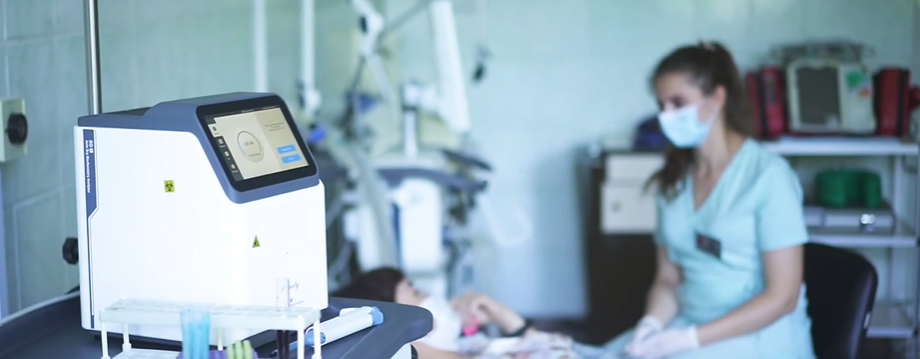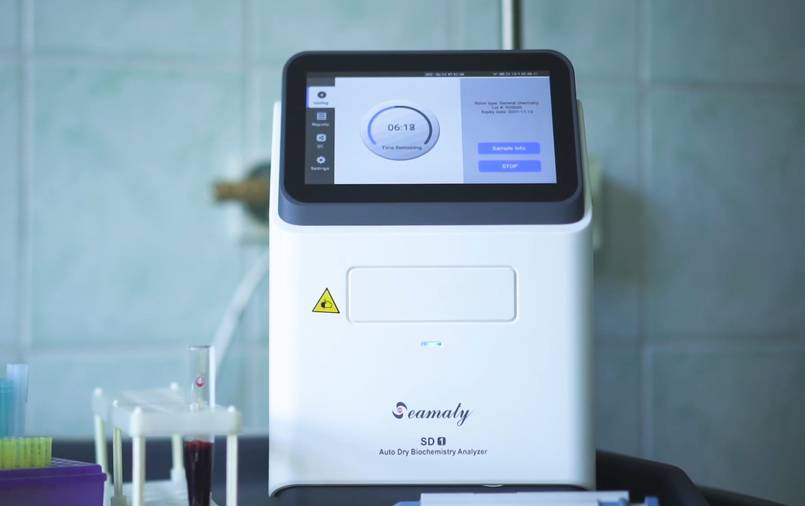Some enzymes with relative molecular mass much larger than normal enzyme molecules can sometimes be found in the serum, which are usually called giant enzymes or macroenzymes for short. Because of their large molecular weight, they are not easily excreted in the body and are not easily degraded by the macrophage system, and because of their long half-life, they remain in the blood for a long time. Its presence will seriously interfere with the correctness of routine clinical enzyme assays. Macroenzymes are prone to misjudgment of enzyme results and clinical misdiagnosis.
The reported giant enzymes are as follows: CK, LDH, AST, AMY, GGT, ALP, etc., which can be identified by the following methods: agarose gel electrophoresis (control serum must be done at the same time for control), column chromatography, ultracentrifugation, enzyme activation energy determination, heat inactivation test, immunological methods and electrophoresis combined for identification, etc.
1. Megacreatine kinase (MCK)
MCK has two types, namely MCK1 and MCK2 (also known as MtCK). MCK has a great impact not only on clinical enzymatic assays.MCK has two types, namely MCK1 and MCK2 (also known as MtCK).
MCK not only has a great impact on clinical enzymatic assays, but is also extremely closely associated with clinical disease. The most common specific index for the diagnosis of acute myocardial infarction or myocardial necrosis is the application of immunosuppression method to determine CK-MB. The principle of this method is to inhibit the M subunit with antibodies and measure the B subunit activity, and the result multiplied by 2 is the CK-MB activity. When MCK or CK-BB are present in the serum, their activity is 100% measured because they are not inhibited by anti-M subunit antibodies, and they have to be multiplied by 2. Therefore, the phenomenon that "CK-MB" is equal to or higher than total CK appears (in fact, the proportion of CK-MB activity to total CK activity is rarely more than 30%).
Such patients are often admitted to hospital as heart patients, which not only causes serious mental burden to patients and wastes unnecessary medical expenses, but also delays the early diagnosis and treatment of certain malignant diseases.
2. Megalactate dehydrogenase (MLDH)
LDH is a tetrameric enzyme with five isozymes. When one of the isoenzymes forms MLDH with its own antibody immunoglobulin or LDH forms a complex with lipoprotein or each type of isozyme polymerizes itself, the isozyme pattern can be changed. complexes with IgM are rare. Patients with immunoglobulin monoenzyme complex disorders have been noted to have autoimmune diseases, and an autoimmune basis for the formation of giant LDH has been reported.
It has been reported in the literature that 6 of 42 patients with typical giant LDH had an autoimmune disease. In contrast, 20 of 30 cases containing Ig had autoimmune diseases. In addition to the reported relationship between giant LDH and both immunoglobulin complexes and autoimmune diseases, some authors have also reported that giant LDH can be present in both new and old myocardial infarction.
3. Macroaspartate transferase (MAST)
Macro AST is a complex of AST and Ig, which may be closely related to the disorder and is usually not harmful to the body, but may cause increased serum enzyme activity and lead to increased examination.
4. Macroamylase (MAMY)
MAMY in serum can be formed by the polymerization of normal AMY in serum or by the formation of complexes between AMY and immunoglobulins in the form of non-covalent bonds. It can also be formed from AMY and polysaccharide to form a substrate polysaccharide complex. Since 1964, when the term "macroamylasemia" was first coined, dozens of cases of isozyme macroamylasemia have been reported in the literature. It is characterized by the absence of lesions in the pancreas, salivary glands and kidneys. However, serum AMY activity is persistently elevated. Because of the large size of this abnormal amylase molecule, it cannot be excreted by the kidneys. Therefore, urinary amylase activity is lower than normal. The disease has no significant health effects. In addition to abdominal pain, which often occurs. It can also be without any specific symptoms. If you don't recognize this disease, it can be misdiagnosed as pancreatic disease.
5. megaglutamyl transferase (MgammaGT)
MgammaGT is mainly seen in patients with extrahepatic obstructive jaundice, and the identification of MgammaGT is of some significance in distinguishing extrahepatic obstructive jaundice from hepatocellular jaundice.
6. Macroalkaline phosphatase (HMALP)
IgG, IgA, IgM can form complexes with hepatic, bone or small intestine ALP, and in addition hepatic ALP can form complexes with plasma lipoproteins. HMALP is a pathological isoenzyme. It is mainly present in the serum of patients with primary and metastatic hepatocellular carcinoma and obstructive hepatobiliary disease. In some countries, it has been used as an adjunct clinical test for hepatocellular carcinoma.
HMALP test is highly sensitive for primary liver cancer, especially for primary hepatocellular carcinoma, and the positive compliance rate of HMALP test for metastatic liver cancer is significantly higher than that of AFP test, thus compensating for the low positive rate of AFP test for metastatic liver cancer.
From the study of giant molecular enzymes, we found that the relationship between giant molecular enzymes and clinical is very close and important. Those who present with giant molecular enzymes tend to be older, patients with malignancy, autoimmune diseases, cardiovascular diseases, etc. The presence of giant molecular enzymes often has the following characteristics: clinical symptoms are not obvious; serum enzyme activity is abnormal but clinical manifestations are not typical; isoenzyme profile is abnormal. Only by maintaining a high level of vigilance for these will they not result in incorrect diagnosis.


